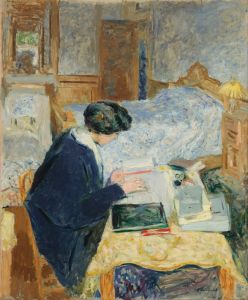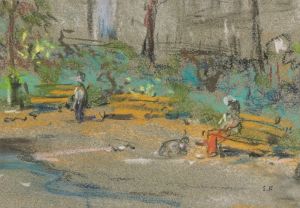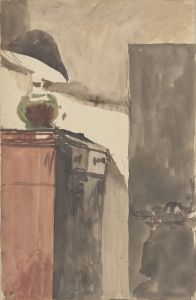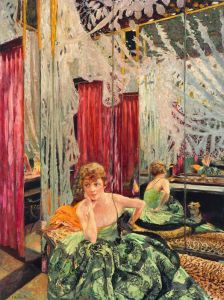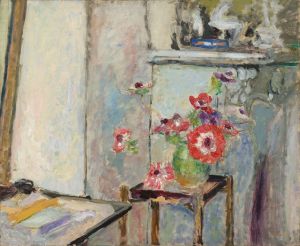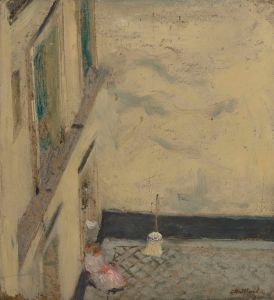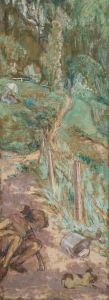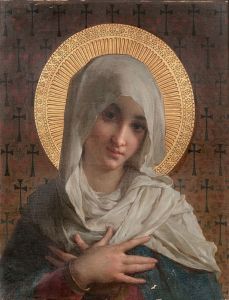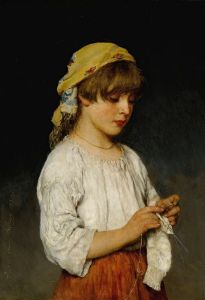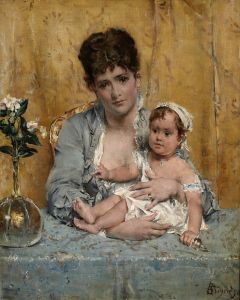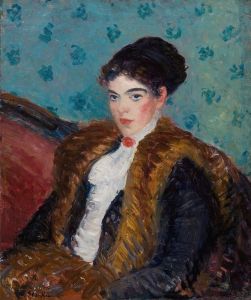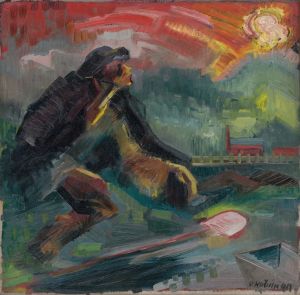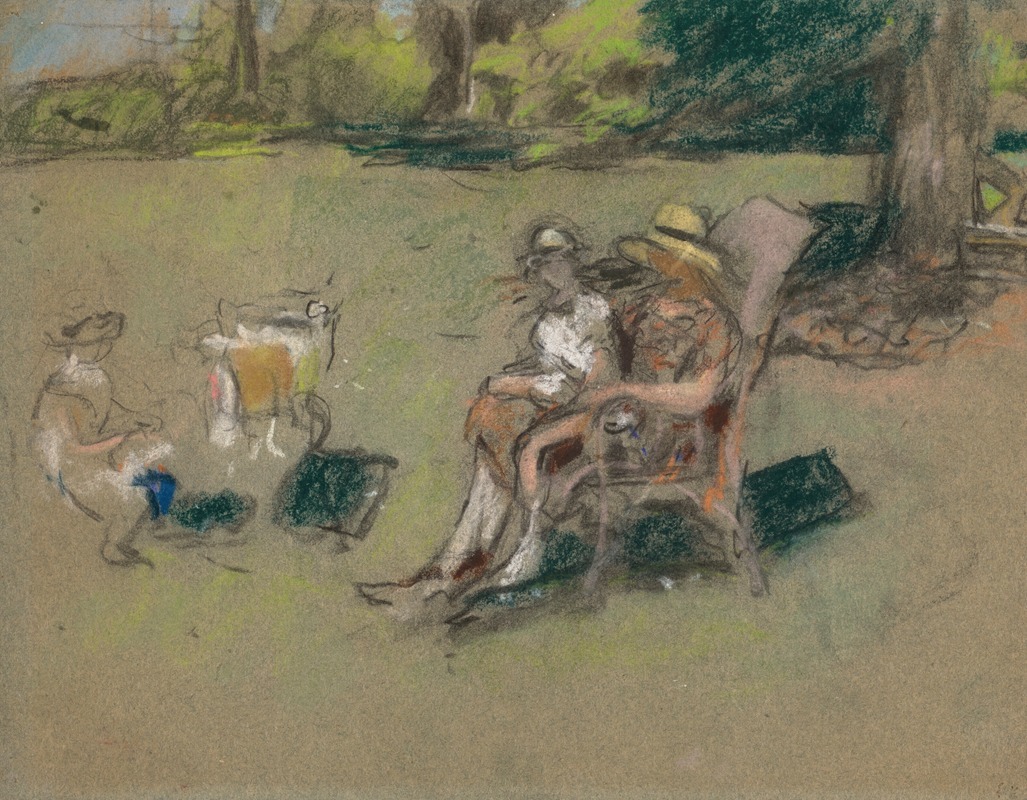
Madame Henri Kapferer et ses enfants
A hand-painted replica of Édouard Vuillard’s masterpiece Madame Henri Kapferer et ses enfants, meticulously crafted by professional artists to capture the true essence of the original. Each piece is created with museum-quality canvas and rare mineral pigments, carefully painted by experienced artists with delicate brushstrokes and rich, layered colors to perfectly recreate the texture of the original artwork. Unlike machine-printed reproductions, this hand-painted version brings the painting to life, infused with the artist’s emotions and skill in every stroke. Whether for personal collection or home decoration, it instantly elevates the artistic atmosphere of any space.
Édouard Vuillard's painting Madame Henri Kapferer et ses enfants is a work by the French artist, known for his association with the Nabis group and his intimate, domestic interior scenes. Vuillard, who lived from 1868 to 1940, was celebrated for his ability to capture the subtleties of everyday life, often portraying his subjects in richly patterned and textured settings.
This particular painting depicts Madame Henri Kapferer and her children. Henri Kapferer was a prominent financier and art collector in Paris during the late 19th and early 20th centuries. His wife and children were part of Vuillard's circle of patrons, as the artist often received commissions from affluent families to create portraits that reflected their domestic lives. Vuillard's works from this period frequently emphasize the interplay between figures and their surroundings, blending the subjects into their environments through the use of intricate patterns, muted colors, and soft lighting.
In Madame Henri Kapferer et ses enfants, Vuillard employs his characteristic style, focusing on the intimate bond between the mother and her children. The painting is notable for its attention to detail, particularly in the depiction of textiles, furniture, and other elements of the interior space. These details not only provide a sense of the family's lifestyle but also contribute to the overall atmosphere of warmth and familiarity. Vuillard's technique often involved the use of distemper, a medium that allowed him to achieve a matte finish and subtle tonal variations, enhancing the quiet, introspective quality of his works.
The painting reflects Vuillard's broader artistic philosophy, which prioritized the emotional and psychological resonance of a scene over strict realism. By integrating the figures with their surroundings, he created compositions that feel both intimate and harmonious. This approach aligns with the principles of the Nabis, a group of post-Impressionist artists who sought to move beyond naturalistic representation and explore the decorative and symbolic potential of art.
While the exact date of the painting is not specified, it likely belongs to Vuillard's mature period, during which he focused extensively on commissioned portraits and domestic interiors. The work is an example of how Vuillard's art bridges the personal and the universal, offering a glimpse into the private lives of his subjects while also conveying broader themes of family, home, and human connection.
Today, Madame Henri Kapferer et ses enfants is recognized as a testament to Vuillard's skill in capturing the essence of his subjects and their environments. The painting is held in a private or institutional collection, though specific details about its current location are not widely documented.





